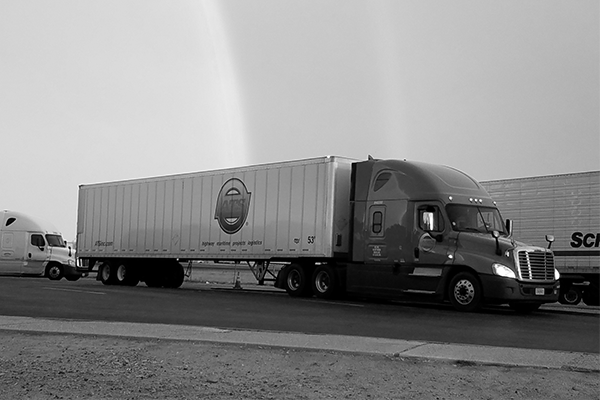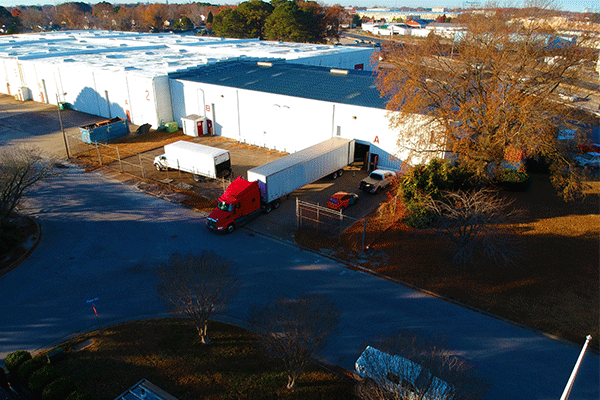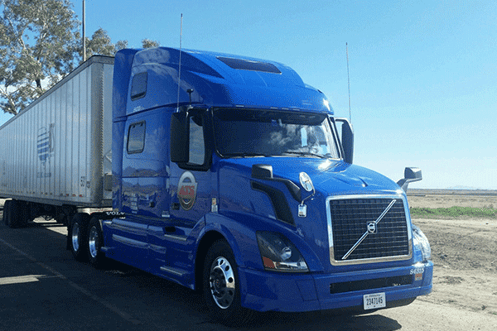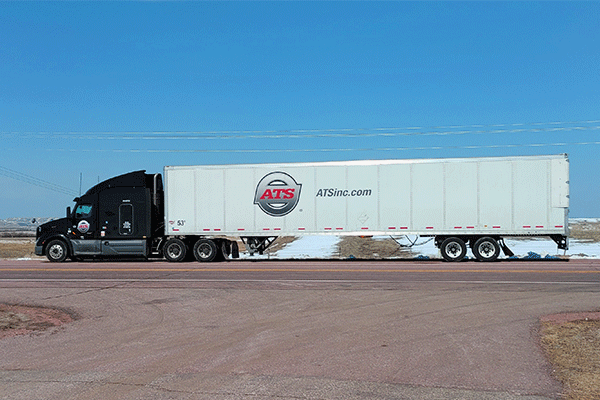
Carriers and transportation providers shouldn’t be the only people who understand less-than-truckload (LTL) freight classifications. After all, it’s not even their freight that needs transportation. No, as a shipper in a booming industry, you deserve to know everything about how your freight is classified.
Having this knowledge will help you avoid costly delays and unnecessary confusion and assist you in your mission toward supply chain perfection. Your business and your partnerships deserve to be perfect, let’s make it so.
ATS has been in the business of moving LTL freight since 1965. And, a common side-effect accompanying this kind of longevity is the development of some fairly refined transportation expertise. We’ve got one of those.
In this blog, we’ll pour out all the freight classification knowledge we’ve accrued during our decades operating in this industry, trim some of the fat, and serve it up in an educational way.
It’s high time that this industry’s providers passed along some of the “secret sauce”, the “know-how”, that has tugged American business along for the ride over the last century.
Now’s the time. So, let’s start making the most of that budget of yours.
What is Freight Class?
Developed by the National Motor Freight Traffic Association (NMFTA), “freight class” is a system for denoting a commodity’s “transportability” based on several criteria. There are 18 total freight classes ranging from 50 to 500 — increasing at varying intervals.
Since less-than-truckload (LTL) freight can come in all shapes and sizes, these freight classifications help add some structure to what could otherwise be a hectic process.
To determine which “class” each load falls into, freight is classified based on four criteria:
- Density
- Stow-ability
- Handling
- Liability
What is Freight Density?
An LTL shipment’s density is calculated using two metrics: its overall dimensions (height, length, width) and its weight. In a nutshell, the amount of LTL trailer space a shipment utilizes, as it relates to its weight, equals its freight density.
How Do You Calculate Freight Density?
Calculating your load’s density can be done quite quickly by dividing its total weight (in pounds) by the volume of space it occupies in cubic feet.
The equation for calculating cubic feet looks like this:
|
Freight width X Freight length X Freight height / 1,728 |
For example, let’s say you need to move a pallet of 500 bricks (bricks commonly fall into freight class 50 by the way). Granted you’re using a standard-sized pallet (which you are) your cubic feet equation will be:
|
40 inches X 48 inches X 48 inches / 1,728 = 53.34 cubic feet |
Pretty easy huh? We’re not done yet though. Now, let’s assume that each brick weighs roughly 4 pounds, which gives us a total weight of 2,000 pounds.
To finish our equation, we simply divide 2,000 pounds by 53.34 and get our total freight density of. . . you guessed it. . . 37.5.
As your load’s density rises, its freight class will decrease to match. And, some of the most compact freight, like pallets of bricks, fall into freight class 50.
What is Freight Stowability?
Some kinds of freight simply can’t be placed near others. Hazardous materials and freight that has sharp, protruding, edges are two commodities that are hard to stow in an LTL setting — where trailer space is shared.
To quantify this, the NMFTA dictates that freight types where stowability is a consistent issue, are placed in a higher freight class.
What is Freight Ease-Of-Handling?
For the most part, LTL freight is neatly packaged and easy to handle. Loading freight like palletized bricks is easy. Simply get it onto the deck of the trailer and forget about it, simple and sweet.
Other kinds of cargo, though, can be more difficult to take care of.
Should cargo need special attention due to fragility, size and shape — or for any other reason — its freight class is raised. LTL truckers like freight that makes their job more manageable and easy-to-handle freight does just that.

What is Freight Liability?
When freight is fragile or perishable, the liability risk of hauling these loads increases.
This liability risk directly impacts the freight class each load is sectioned into. As a cargo’s liability increases, so does its freight class. Some of the highest liability freight — like combustible or hazmat materials — fall into the upper levels of freight classification.
What Are The Different Freight Classes?
Although the types of commodities that fall within these classes fluctuates frequently — which makes asking your provider about your freight’s most up-to-date classification vital — here are the NMFTA’s levels for freight classification:
| Freight Class | Density (Pounds per Cubic Foot) |
| 50 | 50 and up |
| 55 | 35-50 |
| 60 | 30-35 |
| 65 | 22.5-30 |
| 70 | 15-22.5 |
| 77.5 | 13.5-15 |
| 85 | 12-13.5 |
| 92.5 | 10.5-12 |
| 100 | 9-10.5 |
| 110 | 8-9 |
| 125 | 7-8 |
| 150 | 6-7 |
| 175 | 5-6 |
| 200 | 4-5 |
| 250 | 3-4 |
| 300 | 2-3 |
| 400 | 1-2 |
| 500 | 0-1 |
A good jumping-off point for guestimating the price of your freight — without the insight of a competent provider — is to assume that as your freight’s density decreases its freight class will rise.
How Does Freight Class Impact Price?

The cost of moving your less-than-truckload shipment is directly tied to its NMFTA freight classification. And, the higher your freight is classed, the more expensive it will be to transport.
For example, a firmly compact pallet of nuts, bolts, washers and screws that are easy to handle, stow away nicely and pose no threat of liability issues, typically fall into class 50.
As such, if you’re a shipper who’s daring enough to ship nuts and bolts on the same pallet as washers and screws — a practice that’s a bit too wild for my taste — finding a truck to haul them will come at a very affordable rate.
Alternatively, moving a big box of brand-new smartphones or a crate of crystal vases — which are both high liability freight — will land in far higher freight classes.
These heightened liability items take far more attention and effort to haul correctly. Merely moving them opens truckers up to the threat of claims. This often results in an increased freight class and additional cost to shippers.
Fluctuations in the overall trucking market, influence the cost of each of these freight classes. For this reason, it’s important that you consult your transportation provider to get accurate, and current, market pricing information.
What Are NMFC Codes?
When shipping LTL each load is given a National Motor Freight Classification (NMFC) code based on its freight class. These codes are used to denote each shipment/commodity’s class and help truckers and transportation providers plan for, and price, each load accordingly.
Transportation providers spanning this industry utilize their finely-tuned expertise and well-kept databases to provide each of their customers the exact NMFC code for their freight.
Accessing this information without help from a provider is difficult. As such, consulting a professional is the best course of action for shippers with questions about their NMFC codes.
How Can You Save Money on Your Freight Costs?

Finding and developing a relationship with a transportation company that you trust be it a freight brokerage, asset company or 3pl, will go a long way toward saving you money on LTL shipping.
Too often, shippers are confused about their freight classification. This confusion leads to the communication of misinformation from these shippers to their customers.
And crossed signals can be damaging to these important relationships — especially when confusion arises about money. Many times, companies that don’t understand how to classify their freight — or rely on old information to guide them — end up paying more than they actually need to.
With the help of a great transportation provider, the issues that stem from freight class confusion and misinformation can be avoided.
Save money on your freight costs by leaning into the expertise of a competent provider.
Sometimes freight can be bumped a class or two by simply repackaging it to make it more stowable and easier to handle. Additionally, a clear understanding of your freight class from the start can go a long way toward avoiding costly delays, conflict and price hikes.
Be sure to thoroughly outline the specifics of your freight when working with a transportation provider. Only with the proper information can your partner ensure they give you the correct freight class and cost details.
Get The Most From Your Less-Than-Truckload (LTL) Shipping Budget
Although understanding your freight class and how it’s calculated is hugely important when moving LTL freight, it’s not the only thing you’ll need to know.
No, to truly make the most of your less-than-truckload shipping budget, you’ll want to make sure you arm yourself with the tools to succeed.
Here at ATS, our team of transportation experts has compiled a pretty substantial catalog of content to help shippers like you.
Now that you have a better grasp on all things “freight class”. We invite you to check out some more of our LTL-specific content. Education in the transportation industry often leads to success.
Let’s start your journey toward LTL transportation perfection today:
- What is LTL Freight? [definition + examples]
- Why is my freight shipment taking so long? [LTL, PTL & FTL comparison]
- How Much Are The Common LTL Accessorial Charges?
The ATS Learning Hub is another great place to sharpen your transportation industry expertise, make sure to check it out regularly for new content each week.
Finally, if you have questions about your freight class, please reach out. One of our LTL transportation experts will be happy to get you all the information you need.



